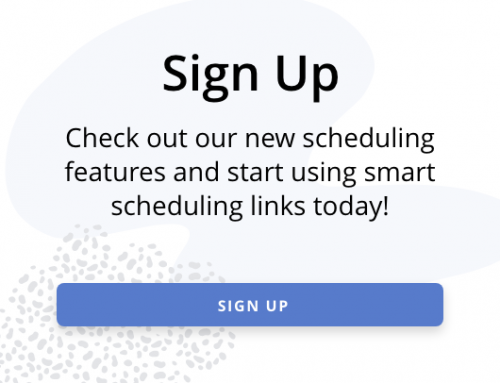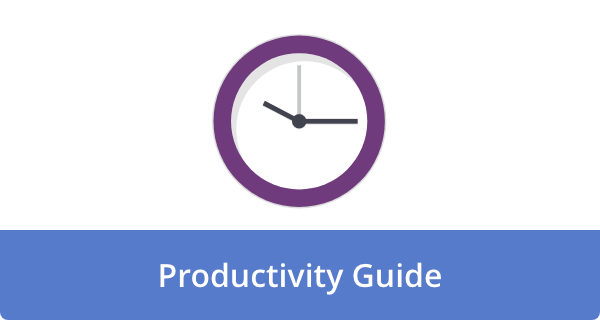

Imagine a chaotic world of overlapping appointments, frustrated executives, and missed opportunities resulting from poor calendar coordination. Now, picture the complete opposite – a realm of organized and efficient meeting schedules that leave everyone feeling productive and accomplished, all made possible by honing your skills in Calendar Coordination 101. meetings that maximize beneficial outcomes. You’ll also delve into effective collaboration, communication practices, time management techniques, and prioritization, culminating in mastering the art of follow-ups and debriefing sessions to extract the best outcomes from each meeting.
The Importance of Calendar Coordination
Mastering the art of calendar coordination is crucial for maximizing the efficiency and productivity of high-impact meetings. When executives have a robust schedule, effective time management becomes imperative to help them focus on their priorities, reduce stress, and streamline their workflow. A well-coordinated calendar enables them to allocate their time and resources effectively, ensuring optimal results. For instance, a study by Forbes reports that a staggering 41% of working hours are spent in meetings, with a large percentage of them being unproductive, highlighting the urgent need for better calendar coordination.
By strategically planning meetings and allocating time for actions and follow-ups, calendar coordination can significantly enhance overall meeting outcomes. Visualizing an executive’s schedule can provide insight into the time allocation for different activities, helping stakeholders identify unproductive patterns and bottlenecks. Ultimately, effective calendar coordination promotes a harmonious balance between work and personal life, improving not just executive productivity but also their overall well-being.
Defining High-Impact Meetings for Executives
High-impact meetings for executives are crucial for making informed and significant business decisions. These meetings serve as a hub for top-level decision-makers to analyze complex issues, engage in strategic planning, and set the course for the organization’s continued growth. For example, executives might come together to evaluate merger opportunities, assess risks, and develop expansion strategies. High-impact meetings ensure collaboration and alignment among key stakeholders, facilitating the effective use of each executive’s expertise and making it critical for business success.
To optimize the effectiveness of high-impact meetings, it’s essential to establish a clear agenda, set realistic expectations, and facilitate open communication between all involved parties. Among the best practices, consider utilizing advanced scheduling tools to coordinate participants’ availability, setting pre-meeting objectives, and assigning tasks to enhance meeting productivity. Thorough preparation enables executives to make informed decisions with a broader perspective, ultimately leading to better outcomes for the company. Ultimately, well-coordinated, high-impact meetings set the stage for organizations to reach their full potential.
Leveraging Technology: Tools and Platforms
Leveraging technology has become an indispensable aspect of Calendar Coordination, especially when scheduling high-impact meetings for executives. The utilization of tools and platforms for this purpose not only enhances productivity but streamlines communication, ensuring that meetings are conducted efficiently. Reducing any last-minute confusion is essential. Many organizations have adopted remote work, and the growth of video conferencing platforms like Zoom and Microsoft Teams has provided a virtual meeting space that can be seamlessly synced with these scheduling tools, further facilitating coordination.
Another essential aspect of leveraging technology in calendar coordination is the compatibility of tools across various devices. With the ever-increasing use of smartphones and tablets, having scheduling tools available on the go has become a necessity. Luckily, most scheduling tools are equipped with mobile applications, providing instant access and the ability to make changes to meetings even when you’re away from your desk. Additionally, several AI-powered virtual assistants are taking convenience to the next level, ensuring that busy individuals can easily manage their calendars. Overall, the use of technology in calendar coordination has greatly improved meeting scheduling outcomes, resulting in more efficient and high-impact gatherings.
Collaboration and Communication Best Practices
Collaboration and communication are the cornerstones of effective calendar coordination for high-impact meetings. Implementing best practices for these elements ensures that executives and team members can maximize time, prioritize tasks, and achieve results with minimal confusion. Adopting shared digital calendars, for example, allows all relevant stakeholders to see availability and important deadlines at a glance. Utilizing project management tools like Asana or Trello facilitates task delegation and tracking, leading to more effective workload distribution and reduced risk of burnout. Additionally, regular communication through team huddles or check-ins can help keep everyone on track and informed about progress and changes.
To facilitate open communication and collaboration, consider incorporating video conferencing tools like Zoom or Microsoft Teams to foster face-to-face connections, even in virtual settings. These platforms often feature tools such as screen sharing and live collaboration options that supplement verbal interactions and help propel meeting goals forward. Enhance transitions between agenda topics by outlining a clear plan beforehand and employing transitional phrases such as “moving on” or “building off that point.” Encouraging open dialogue and feedback throughout the scheduling process also bolsters camaraderie and positive working relationships, creating a more effective and enjoyable calendar coordination experience for all parties involved.
Time Management and Prioritization Techniques
Time management and prioritization techniques are crucial for successful calendar coordination when organizing high-impact meetings for executives. As executives often have hectic schedules, their assistants need to develop effective time management and prioritization strategies to ensure that these high-profile meetings can be conducted efficiently. One such strategy is the Eisenhower Matrix, which categorizes work assignments or responsibilities into four areas based on their importance, enabling executives and their assistants to focus on high-impact tasks while delegating or rescheduling lower-priority items. Additionally, you’ll utilize advanced calendar tools to keep everything organized — such as effective scheduling software and artificial intelligence-driven virtual assistants. These will enable you to map out priorities, anticipate potential scheduling conflicts, and ensure the optimal use of the executive’s time.
Additionally, employing the Pomodoro Technique may help executives to stay focused and maintain momentum during their busy workdays. This method involves breaking down tasks into smaller, 25-minute intervals (called Pomodoros) with short breaks in between, providing an efficient way to tackle complex schedules and complete high-impact meetings. Another key practice involves setting clear objectives for each meeting and sticking to a strict agenda, thus maintaining focus and ensuring that the executive’s time is well spent.
Following Up and Debriefing: Maximizing Meeting Outcomes
Following up and debriefing, when done effectively, can significantly maximize the outcomes of high-impact meetings for executives. Implementing these practices ensures that all attendees leave the meeting with a clear understanding of the action items and assigned responsibilities, setting the foundation for follow-up meetings. For instance, utilizing tools like shared task lists or post-meeting summaries can help keep everyone on track and engaged, while also providing a tangible record of the discussion. Additionally, encouraging participants to share feedback on the meeting’s structure and content highlights potential improvements and fosters a culture of transparency and growth.
Allocating time after meetings for debriefs enables executives to process the information, consolidate their thoughts, and generate next steps, thereby further solidifying the value gained from their time spent in these important meetings. By paying attention to these crucial details, executive assistants can master the art of Calendar Coordination, ultimately helping their executives maximize meeting outcomes and achieve long-term success.
Frequently Asked Questions
Why is calendar coordination essential for executives?
Calendar coordination is crucial for maximizing the efficiency and productivity of high-impact meetings. It helps executives focus on their priorities, reduces stress, and streamlines their workflow. Effective calendar coordination also ensures optimal allocation of time and resources, ultimately facilitating better meeting outcomes and overall well-being.
What are high-impact meetings for executives?
High-impact meetings are crucial for making informed and significant business decisions. These meetings bring together top-level decision-makers to analyze complex issues, engage in strategic planning, and set the course for the organization’s continued growth. Effective, well-coordinated high-impact meetings ensure collaboration and alignment among key stakeholders, facilitating the optimal use of each executive’s expertise.
How can effective collaboration and communication be achieved in calendar coordination?
Adopting shared digital calendars, using project management tools, and maintaining regular communication through team huddles or check-ins can foster effective collaboration and communication. Utilizing video conferencing tools like Zoom or Microsoft Teams helps to maintain face-to-face connections, even in virtual settings, and ensures smoother meeting experiences.
What are some time management and prioritization techniques for calendar coordination?
Techniques like the Eisenhower Matrix can help categorize tasks based on their urgency and importance. At the same time, advanced scheduling software and AI-driven virtual assistants help map priorities, anticipate conflicts, and optimize executives’ time. The Pomodoro Technique can help executives maintain focus by breaking tasks into smaller intervals. Setting clear objectives and strict agendas for meetings ensures the efficient use of time.
How can following up and debriefing maximize meeting outcomes?
Following up and debriefing ensure that all attendees have a clear understanding of action items and responsibilities, while also setting the foundation for future meetings. Utilizing tools such as shared task lists and post-meeting summaries helps keep everyone on track and engaged. Allocating debrief time enables information processing, thought consolidation, and the generation of next steps, thereby further solidifying the value gained from meetings.
Featured Image Credit: Photo by cottonbro studio; Pexels











Abby Miller
Student at UC Berkeley, currently working on a degree in Electrical Engineering/Computer Sciences and Business Administration. Experienced in CSX, productivity management, and chatbot implementation.